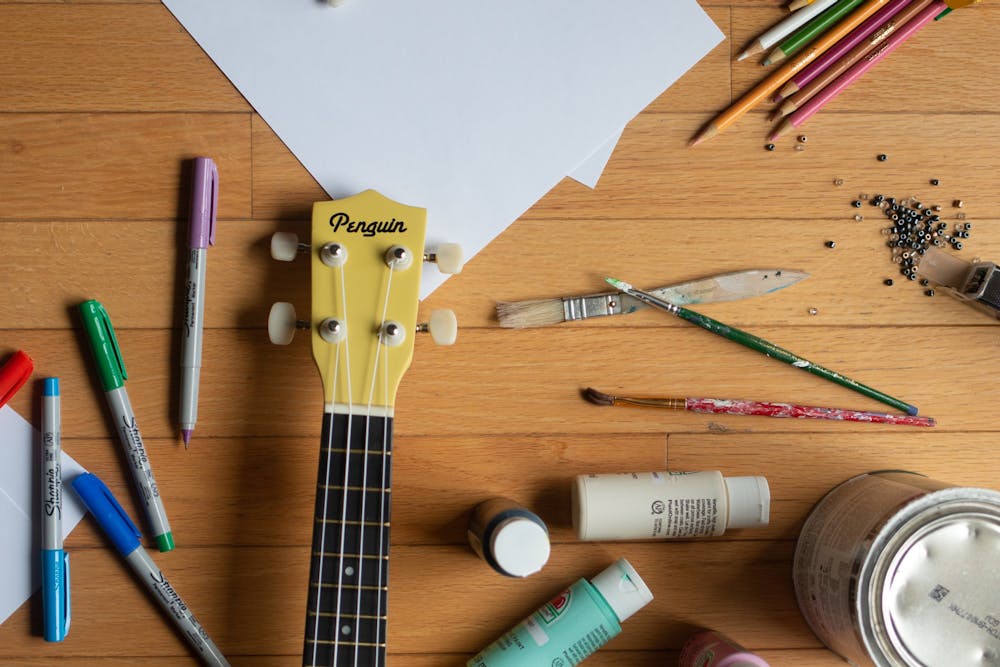Milbre Burch
Milbre Burch, a storytelling performance artist, said she appreciated the grant.
“I am simply someone that applied and was lucky enough to be among the 35 folks that got one,” Burch said.
Twenty years ago, Burch and her husband began comprising over 200 hours of digital interviews with 75 other American storytellers. She is using the grant to create a promotional piece to inform people about the archive currently housed at Princeton University.
“Exposure to the world's stories allows me to explain my arc of understanding beyond my own culture and the limitations of a single lifetime,” she said. “It’s like looking into the time capsule of human wisdom.”
She plans on using some of the grant money to hire an experienced editor who can help update her skills and convert her work to an online setting.
“Back when I was a filmmaker it was a 16-millimeter film and analog audio tape that I was cutting with a razor,” she said. “I knew I needed to update my skills and to go deeper than a workshop setting allowed me.”
Edith Snow
Edith Snow, who combines theater, film and music in her artwork, describes her work as “cognitive, psychological and spiritual movement.”
Snow applied for the Interdisciplinary: Music and Film category of the grant, submitting a variety of films, music samples and documents containing song lyrics. She's using her grant to scaffold the first of a series of music videos she’s making, called “The Sublime Force of Water," which pivots around the theme of resilience through trauma.
She also purchased near-field audio monitors and Logic Pro software.
"For the last 10 years, I’ve been listening through tiny desktop speakers, a pair of headphones and sometimes even my car sound system — to discern if what I was mixing would fly in various ways,” Snow said. “The (new) monitors are outstanding and when I first listened to them, I got chills and was just grinning from ear to ear because the sound was absolutely crystalline.”
To get the day's news and headlines in your inbox each morning, sign up for our email newsletters.
Carlos González
Mosaic artist Carlos González Garcia plans on buying 10 mosaic art tables for people to take classes.
“We are contracting local carpenters,'' he said. “Without money, you can’t really do anything, so anytime there’s access to a grant or access to help out artists it’s really appreciated.”
Through the use of different materials and styles, González Garcia says that mosaic art can represent one’s personality. He looks forward to seeing the unique creations the students will make.
“When someone makes mosaic art it’s kind of like a certain language someone expresses when they make stuff,” he said.
Chieko Murasugi
Chieko Murasugi makes hard-edged paintings with collage elements. Within her work, she combines fabric, old drawings, paintings and even her diary entries.
“The paintings are what I call elusive and illusive, in that they use visual illusions to create objects and spaces that are ambiguous,” she said. “The forms are very clearly delineated, but they shift in and out of space and the forms, perceptually — they change shape and change their position in space as you look at them. The reason why I work this way is I’m trying to communicate this sense of the complexities and the ambiguities and the challenges we have in understanding oneself and one’s world.”
Murasugi previously had to use old canvases, reuse old panels or work on paper. Now, she is using her grant money to buy three 60-by-80-inch top-quality canvases.
“It was a huge boost of confidence for me for the committee to agree to invest this much money in my practice,” Murasugi said. “In a way, it’s a luxury, but on the other hand I felt like this was my opportunity and my time to go all out.”
Gesche Würfel
The grant is also providing research opportunities for artists like Gesche Würfel. Her photography is inspired by the urban and natural environments in which she lives.
“I’m especially drawn to more usual spaces that are overlooked and offer a vast area of hidden local histories,” she said.
A portion of the grant will be used for a residency and research for her project “The Absence and Presence of the Berlin Wall.”
“I am doing this research before I go to Germany,” Würfel said. “I’m really looking into Germany’s reunification post-1990 and looking at the new divisions and hostilities that emerge from unification and also the recent years.”
arts@dailytarheel.com



